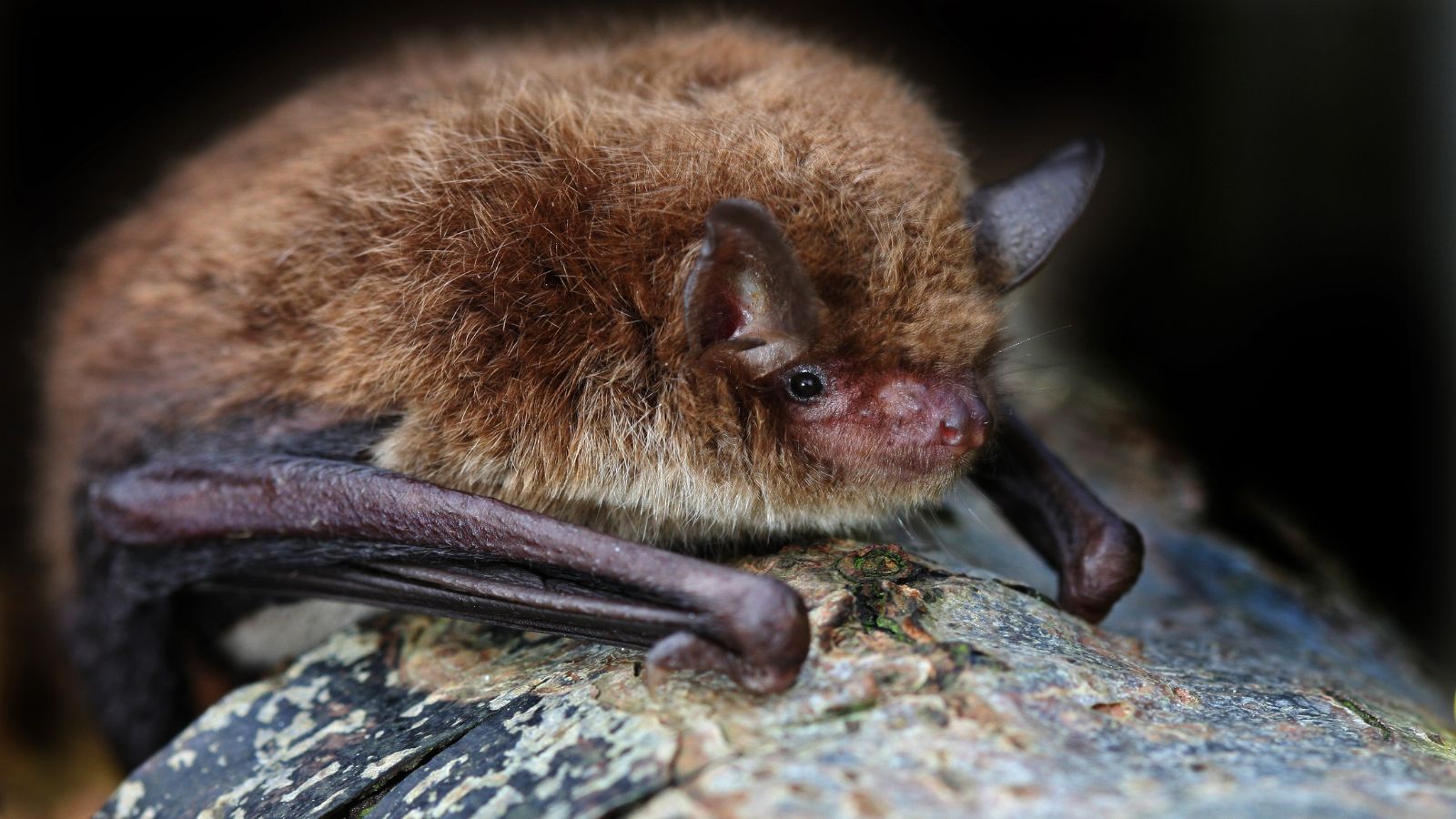Bats have an important role to play in many habitats around the world. Bats help control insect populations by feeding on them, and some tropical plants depend on certain bat species to pollinate their flowers or spread their seeds. In the UK, some bats are ‘indicator species’, meaning that changes to these bat populations indicate changes in biodiversity and overall quality of the environment. Bats can suffer when there are declines in insect populations, or when habitats such as woodlands are destroyed or fragmented.
Population decline
In the UK, bat populations have decreased dramatically over the last 100 years although we are seeing the beginning of a recovery for some species thanks to legal protection and conservation action on the ground. As well as general loss of habitat, bats can face threats from unsympathetic building and development work which affects their roosts, from the disruption of their commuting routes by roadbuilding, and from other sources such as changes in farming practices, and artificial lighting which can cause major issues for bats if installed near to their roosts.
Bat population numbers have decreased in parallel with the continual changes taking place in our countryside and in urban settings too. Natural habitats such as hedgerows, woodlands and ponds have declined and become fragmented. To help bats recover and survive, we must create new suitable habitats as well as managing and enhancing existing habitats. These habitats will bring benefits to lots of other species and to people too.

Threats to bats
As well as loss of habitat, the use of pesticides and intensive farming practices have led to a reduction in the populations of insects – which bats rely on as their only food source. The change from hay making to silage for example means that many insects do not reach adulthood, so there are fewer flying adults available for bats to eat. Climate change may also influence insect life cycles and this can affect when bats are able to feed.
Many bat species roost in buildings and are extremely vulnerable to the activities of humans such as building works or demolitions. Disturbing bat roosts at sensitive times of year such as during hibernation or when baby bats are born and raised can have a huge and negative impact on local bat populations which is why bats and their roosts are legally protected in the UK.
Roadbuilding can negatively impact bat populations, partly through loss of roosts and foraging habitats, but also by disrupting bat commuting routes. Most bat species are reluctant to cross the wide open spaces that roads create, added to which the sudden movement, noise and headlamps from traffic along with street lighting and the risk of getting hit deter bats from using an area. Research also shows that roads have a major negative impact on bat foraging activity.
Artificial lighting near bat roosts, access points and foraging pathways is highly problematic, as bats are nocturnal animals adapted to a life in darkness which helps them avoid predation from bird of prey species such as sparrowhawks. It’s vital that bats are taken into account when considering the need to light an area, if bats are known or suspected to use the area.
Bats are afforded protection by European and UK law in an effort to help bat populations recover from the devastating losses sustained in the last century, but despite this they still face many challenges and urgently need our help.
What can we do?
Bats are a vital part of our native wildlife, accounting for almost a third of all mammal species in the UK. The pressures they face – such as landscape change, agricultural intensification, development, and habitat fragmentation are also affecting many other wildlife species, meaning that bat numbers are accurate indicators for the wider health of the UK’s wildlife. Declining bat populations are just one of the huge global biodiversity losses we are currently experiencing.
At The Future Forest Company, each decision we make in planning takes into account the wider impact to the site’s living inhabitants. The biodiversity on our sites encompasses not just trees, but a whole host of plants, fungi, animals and microorganisms, including bats. We are monitoring and surveying all the bats living on our sites and taking great care to ensure that their habitats are protected.
What can you do
Help us to conserve and restore biodiversity today. With our range of subscription biodiversity plans and one-off gifts, you can contribute towards conserving and restoring biodiversity on our UK sites and have a positive impact on reversing the nature crisis.
With thanks to bats.org.uk




